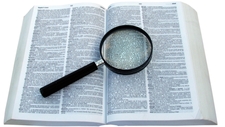Hand Lenses

TEKS Objective
The student is expected to collect, record, and compare information using tools, including computers, hand lenses, rulers, primary balances, plastic beakers, magnets, collecting nets, notebooks, and safety goggles; timing devices, including clocks and stopwatches; weather instruments such as thermometers, wind vanes, and rain gauges; and materials to support observations of habitats of organisms such as terrariums and aquariums.
Essential Understanding
The student uses age-appropriate tools and models to investigate the natural world.
Science Background
Magnifying Glass Information: See It Bigger (website) - A wealth of information on magnification including history, uses, lens size and focal length.
Magnifying Glass Information
See It Bigger, www.seeitbigger.com
When Young Children Use Magnifiers: NSTA (website) - One teacher’s account of her experiences and insights about using magnifiers in her classroom. Includes links to additional teacher contributions related to the use of simple tools with their students and other practical science classroom suggestions.
When Young Children Use Magnifiers
NSTA, www.nstacommunities.org
Signature Lesson
The World Through a Magnifier: Elementary Science Program (website) - Students experiment with magnifying glasses to observe common items around them (skin, coins, cloth, plants), and then record their observations in drawings.
The World Through a Magnifier
Elementary Science Program, www.espsciencetime.org
- Supporting Lessons
- Extensions
- Assessment Ideas
- Literature Connections
- Related
TEKS - Additional Resources
Supporting Lessons
Make a Water Magnifier! Education.com (website) - In early grades, children begin to use magnifying glasses and microscopes to learn how small things can be made to appear larger than they really are. In this activity, students make their own magnifiers with a drop of water and simple household materials.
Make a Water Magnifier!
Education.com
Magnify It: Science NetLinks (website) - To understand that there are limits to what the eye can see, and understand how a magnifying glass can extend those limits, students employ a hand lens while observing, collecting, recording and comparing information about various common objects.
Elaboration Lessons and Extensions
Is Seeing Believing? K8 Science (PDF) - Students learn about magnification and how the appearance of objects/materials can changed when viewed through a convex transparent material.
Is Seeing Believing?
K8 Science, www.k8science.org
Magnify That: Elementary Globe (PDF) - Students practice observation skills, learn what magnification is, and use hand lenses to begin to understand how tools can aid in scientific observations of very small objects.
Assessment Ideas
Have students draw any object as it appears when magnified with a hand lens. Then have a classmate attempt to identify the object each student has drawn.
Literature Connections
You Can Use a Magnifying Glass. Blevins, Wiley (ISBN-13: 978-0516273280)
What is a Magnifying Glass? Blevins, Wiley (ISBN-13: 978-0516273280)
Can You Guess What it Is? Elliott, Cathy (ISBN-13-978-0756984182)
Additional Resources
The Rolie Polie: PBS Teachers (video) - Use the “Magnification Observation” activity to familiarize students with magnifying glasses and the microscopic world. Then, scroll toward the bottom of the page and click on “I Magnify,” a music video clip from an episode of Sid the Science Kid.
TEKS Navigation
Grade 2
Need Assistance?
If you need help or have a question please use the links below to help resolve your problem.

Comments